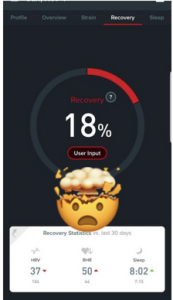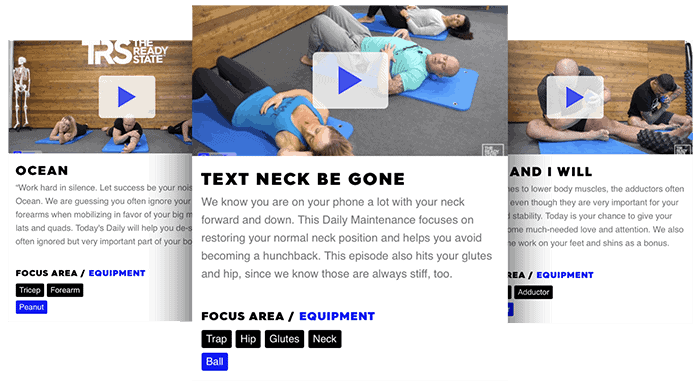-
×
Virtual Mobility Coach - Monthly
1 × $14.99 / month with a 7-day free trial
Cortisone Injections: The Pros and Cons
So you’re in pain. Like, a LOT of pain and you are in search of the magic bullet to fix it. You’ve tried it “all”.
✔️ Rest.
✔️ Ice.
✔️ Meds.
✔️ Voodoo dolls.
Frustrated and left without a resolution it’s been recommended by your medical provider that a Cortisone injection will get you out of pain and … they’re right.
But before you decide to take the needle, or live the life of a martyr, I’m going to give it my best shot to layout the Pro’s & Con’s about Cortisone Injections so that you can make an informed decision and make sure you exhaust some, if not all of your options.
What is Cortisone?
Cortisone is a man-made version of the natural hormone – Cortisol, that is produced by the adrenal glands. It falls into a class of steroid hormones called corticosteroids which assist a wide range of physiological processes such as stress and immune responses. The reason why cortisone injections have been a popular form of treatment for painful orthopedic conditions since it was first introduced in the 1950s is because of its ability to suppress local heat, redness, swelling and tenderness; all which are characteristics that we have come to know as, inflammation.
Makes sense right? If something is inflamed, get rid of inflammation!!!
But I urge you to read this with extreme caution. There have also been other things that we’ve been made to believe.
The Earth was flat.
To prevent heart disease, switch to margarine, stay away from all fats, throw out egg yolks, and eat skinless and boneless chicken breast. All-day. Every day.
Val Kilmer as Batman.
To keep skin healthy, young-looking, prevent skin cancer and feel radiant, limit exposure to sunlight, use sunblock when you do get outside (like all the time) and wonder why you’re vitamin D deficient and feeling meh.
George Clooney as Batman.
But here’s the big one – to heal an injury, get rid of inflammation.
This is where we are wrong.
The Healing Process

There are 3 Phases of the Healing Process:
- Inflammatory
- Repair
- Remodeling
The Inflammatory phase begins at the initial point of injury and lasts up to 14 days. The Repair phase begins 2-3 days after the initial insult and lasts up to 4 weeks and the Remodeling phase begins 1 week after the initial injury and can last months to years.
To piggyback off the previous work of Gary Reinl, author of Iced, we need inflammation to begin the healing process. Inflammation is the intrinsic signal that our clever body is sending at a microscopic level to start cleaning up the mess we created. Suppressing inflammation only delays this series of overlapping and sequential phases that are required for new and healthy cells to repair, build, and mature.
Inflammation is also an extrinsic signal that we need to do a better job of how we are moving and/or dosing movement.
Either way, inflammation is information.
So why would we want to prevent ourselves from receiving information? Because it can grant us the instant gratification of blocking painful signals that stop the feeling of pain.
But it can come at a cost such as:
- A decrease in tensile strength of tendons and ligaments
- Decrease the force output of muscle
- Increase the rate of cartilage degeneration
- A higher chance of re-injury
How? Because it has been shown to have catabolic effects on nearly every aspect of tissue healing and growth.
Inflammation V. Swelling
There is a difference between inflammation and swelling. By now we know that Inflammation is the body’s essential response to start the healing process by sending the right cells at a molecular level to perform their respective jobs.
Swelling is the byproduct of inflammation, that if left alone, will accumulate and remain stagnant. It’s similar to eating more when you’re already overly full. There’s nowhere for the food that’s been sitting in your belly to go but yet you still keep taking bites of red velvet cake because, c’mon, it’s red velvet cake.
Swelling actually becomes the source of pain. This is why we want to start moving in, as pain-free a way as possible to, as Kelly would say, “take the garbage out and bring the groceries in”, as early as possible.
Movement is Medicine
Movement (muscle contractions) is the simplest and cheapest method to start flushing out swelling and is critical to jump-starting the healing process. Remember, bad stuff out, good stuff in.
First start with the most basic and simple movements that you can think of, at the farthest joint from the site of injury. For example, if you’re suffering from an acute onset of shoulder pain, start by moving the thumb and fingers, then slowly progress to making a fist, then move the wrist, and so on and so on until you’re able to create contractions throughout the whole arm. The goal and purpose of this are to prevent stagnant build-up of waste, promote lymphatic drainage, re-establish a relationship of trust and prevent unnecessary muscle wasting so that you can start to re-gain functional use and then eventually load tendon, muscle, and joints again.
There are also electrical stimulation devices like H-Wave, or compression systems like Normatec that can provide mechanical assistance during prolonged periods of stillness or when it’s not possible to actively and vigilantly produce your own muscle contractions such as while you’re working, sleeping, or binge-watching your favorite show.
When Enough is Enough
Remember that martyr life I mentioned earlier? Don’t do that either. If you’ve become a hot, self-medicating, and sleep-deprived mess, especially longer than the outlined phases of healing, then it may be time. Cortisone injections are not intended to heal, but they can facilitate and provide much-needed relief, especially if your HRV scores or nervous system is fried.
Keep in the back of your mind the catabolic effects of Cortisone injections and some of the research that suggests that those who exclusively receive injections, without other interventions, have a higher rate of re-injury in the long-term. So make sure to counteract those effects with actions that support protein synthesis by getting enough collagen into your diet, fixing the root cause of the issue, and progressively loading with exercise.
Conclusion
So to summarize the pros and cons of Cortisone Injections.
PROs:
- Badass at knocking out Inflammation
- Blocks signals of pain
CONs:
- Does not heal damaged or injured tissue
- It weakens tissue, which results in:
- A decrease in force output of muscle
- Accelerated degeneration of cartilage
- Masking of painful and activity limiting input
- Over the course of the long term, can result in a higher rate of reinjury if it is used as the only “remedy”
As fast as other aspects of our lives have evolved and as we continue to seek out what the next hack is, what the next swipe is, what the next iPhone is. Cortisone injections have been that “hack” for one hot minute and it is still regarded as one of the magic bullets for pain (with downsides). So before you sign up for the 8 Minute Abs version of life, consider what a life of consistently doing small things each day can add up to. Because it’s all about playing the long game anyway – isn’t it?
Stay Inflamed and less Swole, and always in YOUR Ready State.
 Virtual Mobility Coach - Monthly
Virtual Mobility Coach - Monthly 




















After a very bad bike crash with a broken ribs & collarbone and surgical treatment, I developed a significant guarding response in my shoulder during PT. I had very little external rotation without pain. My PT suggested that I immediately follow up with my surgeon, rather than wait for my scheduled visit.
During that visit, I described my condition and my surgeon immediately provided a cortisone treatment. The guarding went away nearly immediately and I was able to work with my PT to restore full range of motion. I think this is the way cortisone is intended to be applied.
Totally. A situation where the juice was worth the squeeze
Based on my limited experience I agree totally with this article. Thanks for explaining cortisone in simple terms.
What are your thoughts on PRP ( protein rich plasma) as a “cure” and a process that actually repairs the damage?
The research on PRP as a “cure” is mixed. What we do know is that moving in a way that doesn’t aggravate and perseverate your symptoms can be pretty therapeutic.
I’m curious to know how this relates to anti-inflammatory diets? I’ve heard things like, “Corn is inflammatory, so you should avoid eating it.”
Nutrition certainly has to support what we’re trying to accomplish which is promote the best expression of ourselves (with the occasional piece of cake). What you may be sensitive to may not get the same response in someone else
I think cortisone shots are way over prescribed. I had 4 to deal with a back issue and they did not help only prolonged my own bodies ability to heal with time. I think that people want the cure-all verse looking at movement patterns that contribute. That said I do know that in some cases it is needed or correct.